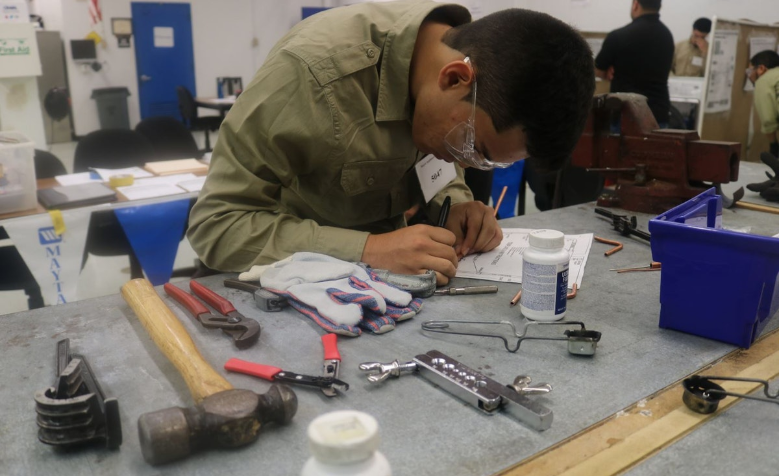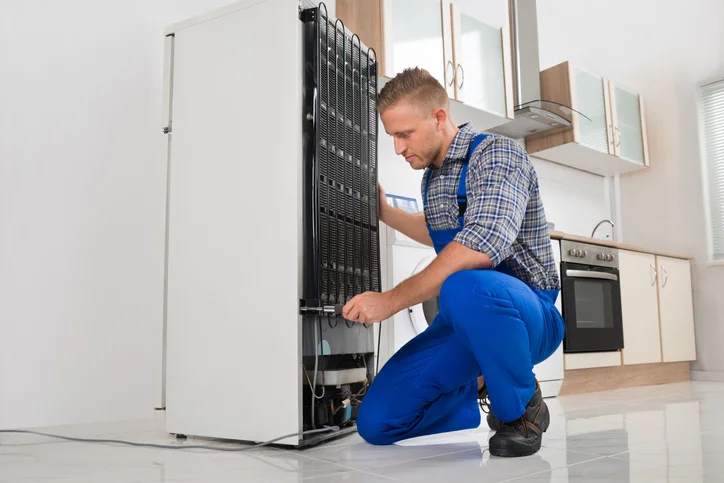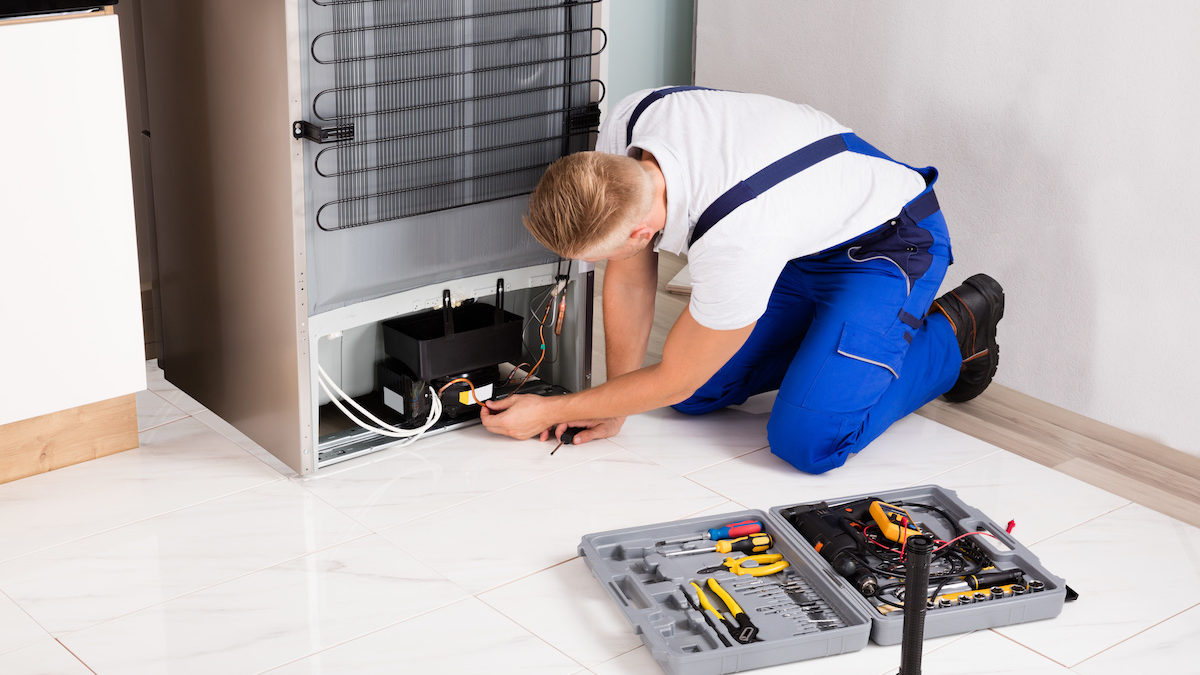Don’t Delay Repairs—Dependable Refrigeration & Appliance Repair Refrigerator repair specialist of Oro Valley Explains the Hidden Costs of Waiting
Don’t Delay Repairs—Dependable Refrigeration & Appliance Repair Refrigerator repair specialist of Oro Valley Explains the Hidden Costs of Waiting
Blog Article
Vital Tips for Effective Ref Repair Work to Expand Appliance Life-span
When it comes to your fridge, appropriate repair service and upkeep are important for long life. Recognizing usual problems and recognizing when to act can make all the distinction.
Comprehending Typical Fridge Problems
Fridges are necessary in maintaining your food fresh, yet they can come across a series of common troubles that interrupt their performance. One regular problem is inadequate cooling. If you discover food spoiling quicker than typical, examine the thermostat settings or consider if the door seals are harmed. Another typical issue is extreme noise, which can suggest a malfunctioning compressor or a falling short follower. You may also experience water merging inside or below the refrigerator; this often results from a blocked defrost drainpipe or a malfunctioning water line. Furthermore, if your refrigerator's light isn't functioning, it can be a straightforward light bulb issue or an issue with the door switch. Lastly, ice accumulation in the fridge freezer can impede air flow and cooling down performance. Acknowledging these concerns early can conserve you time and cash in repair work, ensuring your refrigerator runs smoothly and successfully.
Regular Upkeep Practices
To maintain your devices running efficiently, you require to remain on top of routine upkeep practices. Clean the condenser coils, inspect the door seals, and keep track of the temperature level setups to assure peak efficiency. These simple tasks can save you time and cash on repair services down the line.
Tidy Condenser Coils Consistently
Cleansing your condenser coils frequently can significantly boost your appliance's performance. Dust and dirt develop up on these coils with time, triggering your appliance to function harder and eat more power. To keep them clean, disconnect your home appliance and thoroughly get rid of any type of protective covers. Make use of a vacuum cleaner with a brush attachment or a soft brush to carefully remove particles. If required, a mix of cozy water and moderate detergent can assist eliminate persistent gunk. See to it to allow every little thing completely dry completely before reassembling and plugging the appliance back in. Objective to cleanse your coils a minimum of two times a year, or regularly if you have animals or reside in a dirty setting. This basic job can extend the lifespan of your home appliance significantly.
Examine Door Seals
Three easy actions can aid you guarantee your appliance's door seals are in good condition. Initially, evaluate the seals frequently for any type of splits, rips, or signs of wear. These damages can result in air leaks, impacting performance. 2nd, tidy the seals utilizing warm, soapy water to eliminate any kind of particles or crud. A tidy seal guarantees a limited fit and better efficiency. Perform a basic examination by shutting the door on a piece of paper. If you can quickly pull it out without resistance, the seal may need changing. By complying with these steps, you'll preserve your appliance's effectiveness and long life, saving you cash on power expenses and repair work in the long run.
Monitor Temperature Setups
Regularly monitoring your appliance's temperature level settings is vital for ideal performance and effectiveness. Whether you're handling a refrigerator, freezer, or stove, watching on these settings can prevent lots of problems. For fridges, go for temperature levels in between 35 ° F and 38 ° F; for fridges freezer, linger 0 ° F. If the temperature levels are as well high or low, your device might function harder, squandering energy and reducing its life expectancy. Make use of a thermostat to examine these settings routinely, particularly after major adjustments, like moving your appliance or changing the thermostat. If you observe fluctuations, change the settings appropriately and get in touch with the customer handbook for support. By staying proactive about temperature level surveillance, you'll assure your devices run efficiently and last much longer.
Troubleshooting Cooling Problems
When your refrigerator isn't cooling down properly, it can bring about ruined food and threw away money, so attending to the concern promptly is essential. Begin by checking the temperature level setups to confirm they're at the advised degrees, normally around 37 ° F for the fridge and 0 ° F for the freezer. If the setups are proper, evaluate the door seals for any kind of spaces or damages; a faulty seal can allow warm air to get in.
Examine the condenser coils, usually situated at the back or bottom of the unit. Tidy them with a vacuum cleaner or brush to enhance performance. If problems persist, it may be time to call a specialist.
Repairing Water Leak and Ice Accumulation
If you're handling water leak or ice accumulation in your appliance, it's necessary to determine the source of the issue. By pinpointing where the water is originating from, you can protect against additional issues and prevent pricey repairs. Allow's explore some reliable methods to tackle these common issues.
Identify Leak Sources
Just how can you effectively determine the find resources of water leak and ice accumulation in your home appliances? Start by checking the seals and gaskets on your refrigerator and freezer doors. A worn or broken seal can permit cozy air to enter, triggering condensation and ice. Next off, inspect the drainpipe pan and drainage system for blockages or clogs; a backed-up drain can result in water merging. Search for any kind of loosened links in the water line, which can produce leakages. Also, take a look at the defrost drain for ice accumulation, which might disrupt correct drainage. By systematically checking these areas, you'll determine the source of the trouble, enabling you to take the necessary steps to repair it and prolong your home appliance's lifespan.
Stop Ice Development
To prevent ice development in your appliances, begin by verifying the temperature level settings are appropriate. If your fridge or fridge freezer is as well cool, it can result in extreme ice build-up. Examine the door seals on a regular basis; harmed seals can allow warm air in, creating condensation and ice development.
Keep the appliance well-ventilated and stay clear of overcrowding, as this can block airflow - Dependable Refrigeration & Appliance Repair Refrigerator repair specialist of Oro Valley. Also, consistently thaw your fridge freezer if it does not have an automated defrost function.
If you observe water leak, determine and fix any blocked water drainage openings, as they can add to ice build-up. Ultimately, clean Continue the coils and validate they're operating correctly to maintain peak performance. Taking these actions will help prolong your appliance's life-span and performance.
Resolving Noisy Fridge Seems
While it may seem disconcerting, a noisy refrigerator commonly signals small concerns rather than major malfunctions. Usual perpetrators consist of the compressor, followers, and water lines.
Next, look for loosened products inside. Sometimes, containers or racks can rattle, producing unwanted noise. Tighten or rearrange them to eliminate the noises.
If you observe a clicking sound, it could be the defrost timer. This is typically view safe yet might show it requires assessment.
Finally, validate your fridge is degree. An out of balance home appliance can create vibrations and noise. Utilize a degree to examine, and change the feet if needed. Attending to these issues without delay can help preserve your refrigerator's efficiency and extend its life-span.
When to Replace Components vs. Complete Replacement

Consider the price of repairs versus the appliance's value. Additionally, if you discover ongoing issues that keep recurring, it's an indication that your home appliance has actually reached the end of its life.
Recognizing When to Call a Specialist
How can you inform when it's time to hire an expert for home appliance repair work? If you notice unusual noises, scents, or leakages, it's a clear signal that something's incorrect. Don't disregard these indicators; they often indicate deeper issues. If your home appliance stops working altogether or frequently trips breaker, it's another red flag.
You must also consider your own comfort level with repair services. If you're unclear about identifying the trouble or lack the right devices, it's finest to connect for aid. Bear in mind, attempting challenging repairs can result in even more damage or also safety hazards.

Frequently Asked Concerns
Just how Usually Should I Clean the Fridge Coils?
You must cleanse your fridge coils every 6 months. This helps keep effectiveness and protects against overheating. If you discover too much dust or animal hair, tidy them a lot more often to guarantee your fridge runs smoothly.

Can I Make Use Of Vinegar for Cleaning My Fridge?
Yes, you can utilize vinegar to cleanse your fridge! It's an exceptional all-natural cleanser that eliminates odors and stains. Washing Machine Repair Dependable Refrigeration & Appliance Repair Service. Just blend it with water, use it to surface areas, and clean down for a fresh, tidy refrigerator
What Temperature Should My Fridge Be Ready To?
You need to set your fridge to 37 ° F(3 ° C) for ideal food conservation. This temperature level maintains your food fresh while preventing spoilage, ensuring your groceries last longer and reducing waste. It's a very easy adjustment you can make!
Does a Fridge Required to Be Leveled?
Yes, your fridge needs to be leveled. If it's unequal, it can influence cooling performance and cause excess noise. Inspect the leveling legs and change them to assure correct balance for optimal performance.
Exactly How Can I Lower Fridge Power Usage?
To decrease your refrigerator's energy consumption, maintain it clean and well-ventilated, check door seals for leakages, set the temperature between 35-38 ° F, and prevent straining it. These actions can substantially lower your power expenses.
Report this page